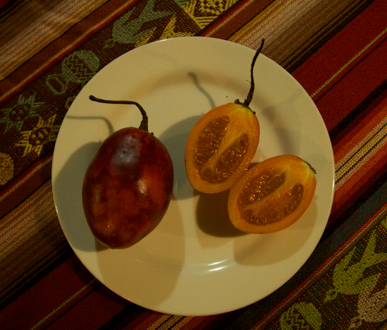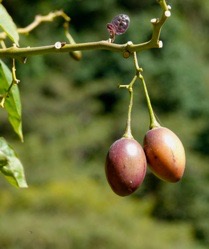
Two varieties, the red variety (pictured above - photo from Ecuador) is more tart than the yellow variety.
Eat it Raw: When cooled and lightly sugared the flesh is often served as a breakfast dish. As a “vegetable”, treat the fruit like a slightly tart tomato.
In Stews and Curries: A nice counterpoint to bland tubers.
As a Juice: Blend with water and sugar.
In Preserves: Very high in pectin but it tends to oxidize and lose color.
Stuffed: The fruit can be hollowed out and treated just like you would a bell pepper. The flesh is often added back in to the stuffing to provide a distinctive taste.
The fruit of Solanum betaceum.
The fruit is also known as tomate de árbol.
Native to the Andes of South America but now grown in many areas of the world. The photograph of Tamarillo (below) was taken in Bhutan.

High in vitamin C and iron, low in calories (about 40 per fruit).
The skin is hard - like a guava.
The flesh is similar in taste to a tomato.

Market Kathmandu, Nepal